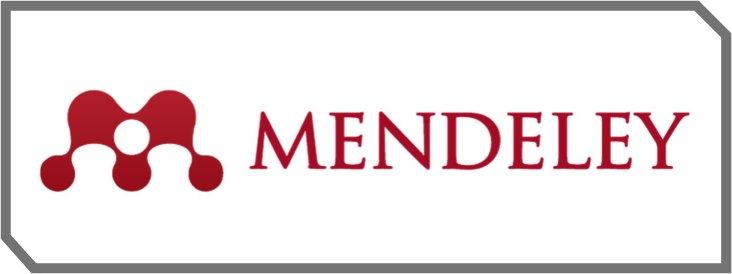Pop-Up Markets as a Social Institution for Community Empowerment Amid the Surge of Digital Markets
DOI:
https://doi.org/10.61806/al-tatawur.v3i1.40Keywords:
Community Empowerment, Digital Markets, Pop-Up Market, Social InstitutionsAbstract
This research aims to explore the phenomenon of pop-up markets as a social institution that empowers the community. Pop-up markets, which often appear spontaneously, function as a space for social interaction that brings together various levels of society. This research looks at the pop-up market from three main perspectives: service provision, social stability, and education and socialization. The method used is a qualitative approach with participatory observation, in-depth interviews, and documentation, which is carried out with the subjects involved, such as traders, buyers, visitors, and other related parties. Data triangulation will be used to ensure the validity of the findings, while discussions with peers and diverse informant involvement will also be conducted. The pop-up market plays an important role in the socio-economic life of the community, providing cheaper prices and economic opportunities for traders who have difficulty accessing formal work. However, this market also faces challenges related to legality, regulation, and social issues such as congestion and public order. Nevertheless, the shock market strengthened relations between residents and created social solidarity. Its management requires balanced policies to maintain economic comfort and benefits without sacrificing the interests of the people who depend on it.
References
M. A. Cherkasova and S. G. Bayurova, "Functions of education which contributes to the reproduction and transformation of values. Stabilizing regional interethnic relations," Mediterranean Journal of Social Sciences, vol. 6, no. 3, pp. 356–361, 2015. doi: 10.5901/mjss.2015.v6n3s1p356.
J. T. da Silva, A. C. A. F. da Silva, E. de Albuquerque Cavalcanti Duarte Gonçalves, P. L. de Oliveira, and M. L. G. da Rosa Oiticica, "The sound’s dynamics in street markets during the Covid-19 pandemic: A case study at Tabuleiro Market, Maceió-AL, Brazil," in Proceedings of 2020 International Congress on Noise Control Engineering, INTER-NOISE 2020.
B. S. Iskandar, J. Iskandar, B. Irawan, and R. Partasasmita, "Traditional markets and diversity of edible plant trading: Case study in Ujung Berung, Bandung, West Java, Indonesia," Biodiversitas, vol. 19, no. 2, pp. 437–452, 2018. doi: 10.13057/biodiv/d190211.
U. Kemparaj and S. Chavan, "Qualitative research: A brief description," Indian Journal of Medical Sciences, vol. 67, no. 3, pp. 89–98, 2013. doi: 10.4103/0019-5359.121127.
S. Miller, "Joint Actions, Social Institutions and Collective Goods: A Teleological Account," in Studies in the Philosophy of Sociality, vol. 2, pp. 99–115, 2014. doi: 10.1007/978-94-007-6934-2_7.
A. Neef and B. Ekasingh, "Introduction," in Environmental Science and Engineering, 2007. doi: 10.1007/978-3-540-71220-6_30.
A. Özpolat, "The reflections of democracy on education as a social change paradigm: democratic education," Milli Egitim, no. 185, pp. 365–381, 2010. [Online]. Available: https://www.scopus.com/inward/record.uri?eid=2-s2.0-77955139854&partnerID=40&md5=f8040d23b2781b6fc9c47ac29d44d496.
P. Y. A. Rajali, B. Hamid, and I. F. Pane, "Study of public’s perceptions toward land use in Pasar Kaget (Case study: Pasar Kaget at Jalan Ahmad Yani Binjai)," IOP Conference Series: Earth and Environmental Science, vol. 126, no. 1, 2018. doi: 10.1088/1755-1315/126/1/012155.
D. G. F. Sagitarian, L. Astikasari, D. Rahmayani, M. F. Armando, G. D. Nugroho, W. Himawan, A. Z. Mutaqin, D. M. Naim, and A. D. Setyawan, "Biodiversity of edible fruit sold at Pasar Gede, Surakarta City, Central Java, Indonesia," Asian Journal of Agriculture, vol. 7, no. 1, pp. 57–68, 2023. doi: 10.13057/asianjagric/g070108.
R. Whitley, "Social capital and public health: Qualitative and ethnographic approaches," in Social Capital and Health, 2008. doi: 10.1007/978-0-387-71311-3_6.
A. M. Roberts, "Understanding the role of markets in urban social dynamics," Urban Studies, vol. 55, no. 9, pp. 1-15, 2018. doi: 10.1080/0042098010015604.
E. T. Martin, "The impact of online commerce on traditional market structures," Journal of Digital Commerce, vol. 34, no. 2, pp. 42–60, 2020. doi: 10.1016/j.jdc.2020.04.003.
J. M. Thompson, "Pop-up markets: A case study in community and economic development," International Journal of Social Economics, vol. 47, no. 8, pp. 1123–1134, 2021. doi: 10.1108/IJSE-12-2020-0577.
L. K. Henderson, "The social significance of temporary markets in urban areas," Urban Sociology Review, vol. 22, pp. 78–89, 2019. doi: 10.1016/j.urban.2019.01.007.
C. L. Wilson and D. H. Jones, "Digital transformation of local markets: Challenges and opportunities," Journal of Digital Innovation, vol. 5, no. 1, pp. 22–37, 2022. doi: 10.1007/s12207-022-0034-4.
Downloads
Published
How to Cite
Issue
Section
License
Copyright (c) 2025 Al-Tatawur: International journal of Social Science

This work is licensed under a Creative Commons Attribution-ShareAlike 4.0 International License.








